Discover attribute importance and willingness to pay with Generic Conjoint
Generic Conjoint involves asking your potential customers to choose among several hypothetical product options. Each of these options is described via a different combination of features (called attributes and levels).
Generic Conjoint is very popular and is suitable for cases when you have:
- Not a huge number of features (up to 8) that are enough to describe your product as a whole.
- Non-binary features that have multiple levels (for example, grades, colours, flavours).
- Price can be included as one of the features.
Key outputs of Generic Conjoint will help you prioritise features through:
- Importance of attributes (i.e. the effect of the difference between the least and most preferred level of an attribute).
- Marginal willingness to pay for features.
Generic Conjoint is easy to set up and is rich with other outputs.
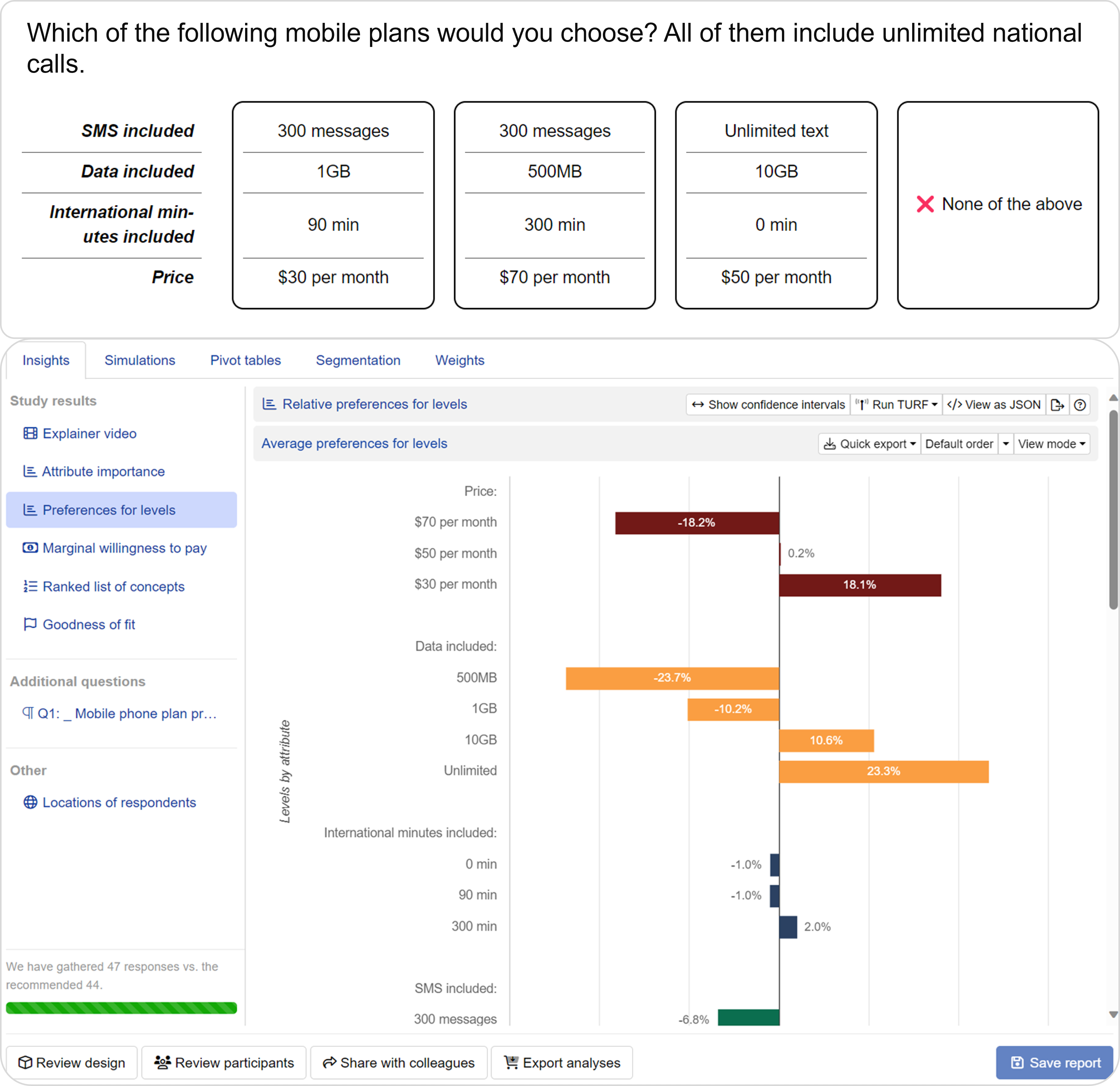
Simulate competitive scenarios with Brand-Specific Conjoint
Brand-Specific Conjoint presents your customers with several product options across brands to choose from. In contrast to Generic Conjoint which focuses on a single brand, Brand-Specific Conjoint allows you to mimic real-world competitive scenarios by specifying the attributes and levels for different brands.
Brand-Specific Conjoint is the perfect tool for feature selection when:
- Existing competitor SKUs are available.
- Product features vary across competing brands.
- Product demands are affected by competitors’ offerings and pricing.
Key outputs of Brand-Specific Conjoint help you identify the most optimal features and price points via:
- Relative performance of brands.
- Importance of attributes.
The Conjointly’s online simulator further levels up the Brand-Specific Conjoint by showing the impact of feature adjustments through valuable metrics such as preference share, revenue, and gross margin.
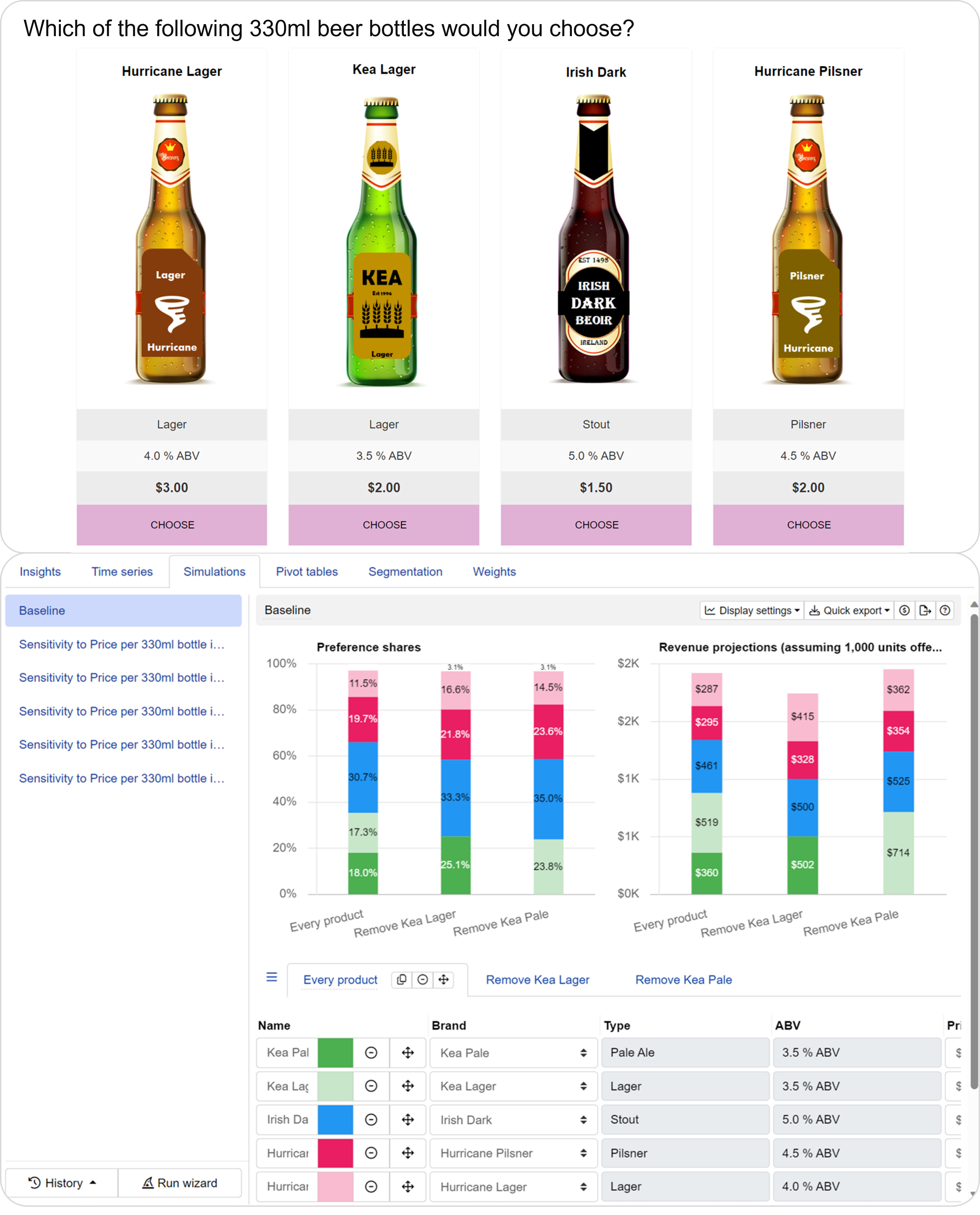
Rank features with MaxDiff, then find appealing combinations with TURF
MaxDiff analysis generates a robust ranking of product features by polling your consumers directly on each feature. Each MaxDiff question asks respondents to choose the best and the worst features from a set of 2 to 5 options.
MaxDiff is an established statistical technique that helps you:
- Sort features according to consumer preference or satisfaction.
- Test the combinations of similar features (for example, colours, flavours, and packing).
With just one click, you can conduct the TURF analysis on your MaxDiff data to identify the top combination of features that appeals to the largest proportion of consumers.
Besides top combinations, the main outputs of TURF analysis also provide you with:
- Prioritised sequence of combination (ladder) (i.e. the optimal order to add features that reach the most amount of consumers).
- Simulate scenarios that help you calculate the reach and frequency of your desired custom feature combinations.
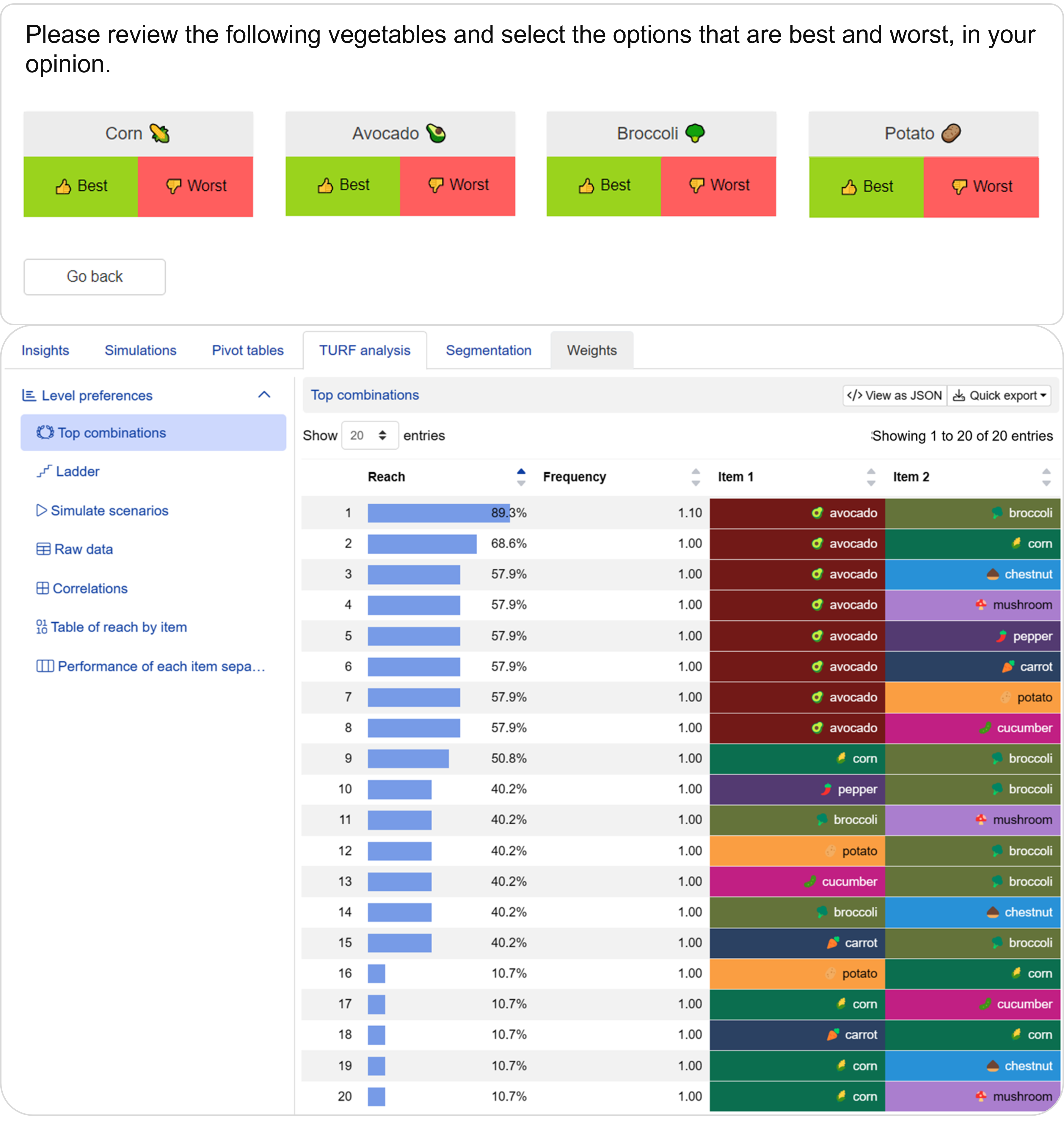
Differentiate between must-haves and delighters with the Kano Model
The Kano Model surveys how your customers feel when a feature is offered and when it is excluded. Based on the feedback, the Kano Model categorises product features as either:
- Must-be features - Hard requirements for your product.
- Attractive features - Unexpected delighters that cause joy when included.
- Performance features - Expected features that drive consumer satisfaction.
- Indifferent features - Features where inclusion has no impact on satisfaction.
The Kano Model is a time-tested tool that is commonly used for:
- Exploring a large number of features (up to 30).
- Testing a wide range of features and functions.
- Customising tier-based offerings.
Key outputs of the Kano Model will help you discover the features considered must-haves and delighters, while not wasting resources on features that consumers are indifferent to.
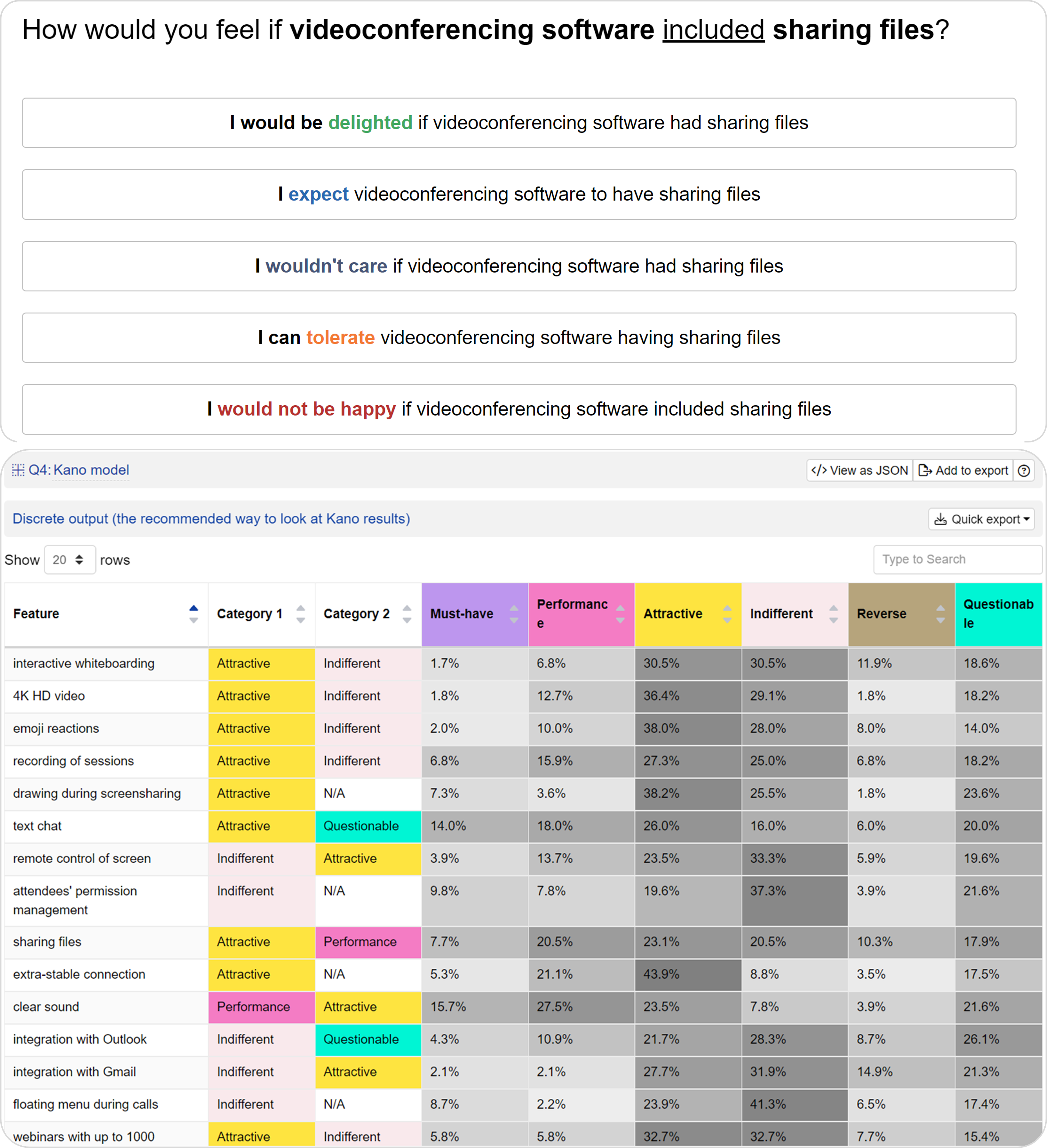
Use segmentation to focus on the needs of your consumers
Conjointly’s segmentation function helps you to break down further how preferences and attitudes toward product features differ among consumer groups.
You can split your analyses into multiple segments by these types of variables:
- Respondent information recorded by Conjointly.
- Additional questions.
- GET variables.
- Externally supplied variables.
The Segmentation and Crosstab tabs automatically generate within the report once the segmentation is set up, helping you offer the features that each consumer group are most interested in with only a glance.
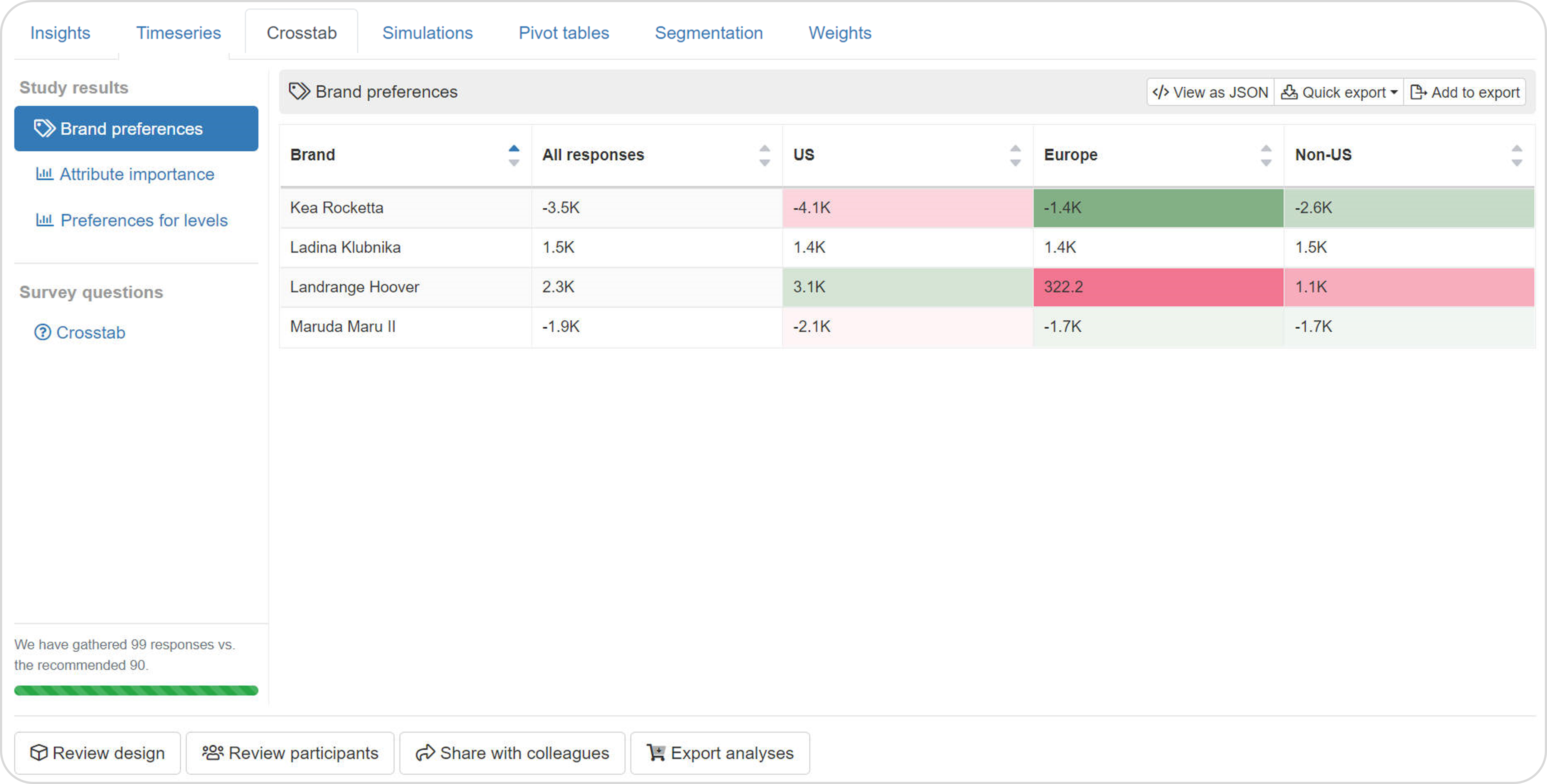
Conjointly makes market research easy
You get agency-quality results at a fraction of the cost and time investment. One powerful end-to-end platform for insights teams for fast and reliable market research. Get answers to questions about features and claims studies. We help your insights, marketing, and product teams understand consumers and make confident decisions.
Powerful product research tools
Conjointly methods are thoroughly tested and rooted in marketing science.
User-friendly interface
Design your features and claims studies with our intuitive interface for fully automated experiments.
Detailed interactive reports
Conjointly will automatically analyse the data and prepare online and Excel reports.
Understand feature selection tools in detail
Explaining Conjoint Analysis and How It Works
Learn how conjoint analysis works and how you can use it to optimise your product features.
Explaining Kano Model and How to Use It for Feature Selection
The Kano Model is used to analyse consumer preferences for different features and group features into multiple categories.
Explaining TURF Analysis and When to Use It
TURF analysis (Total Unduplicated Reach and Frequency) is a statistical technique that ranks combinations of products by how many people will like these combinations.